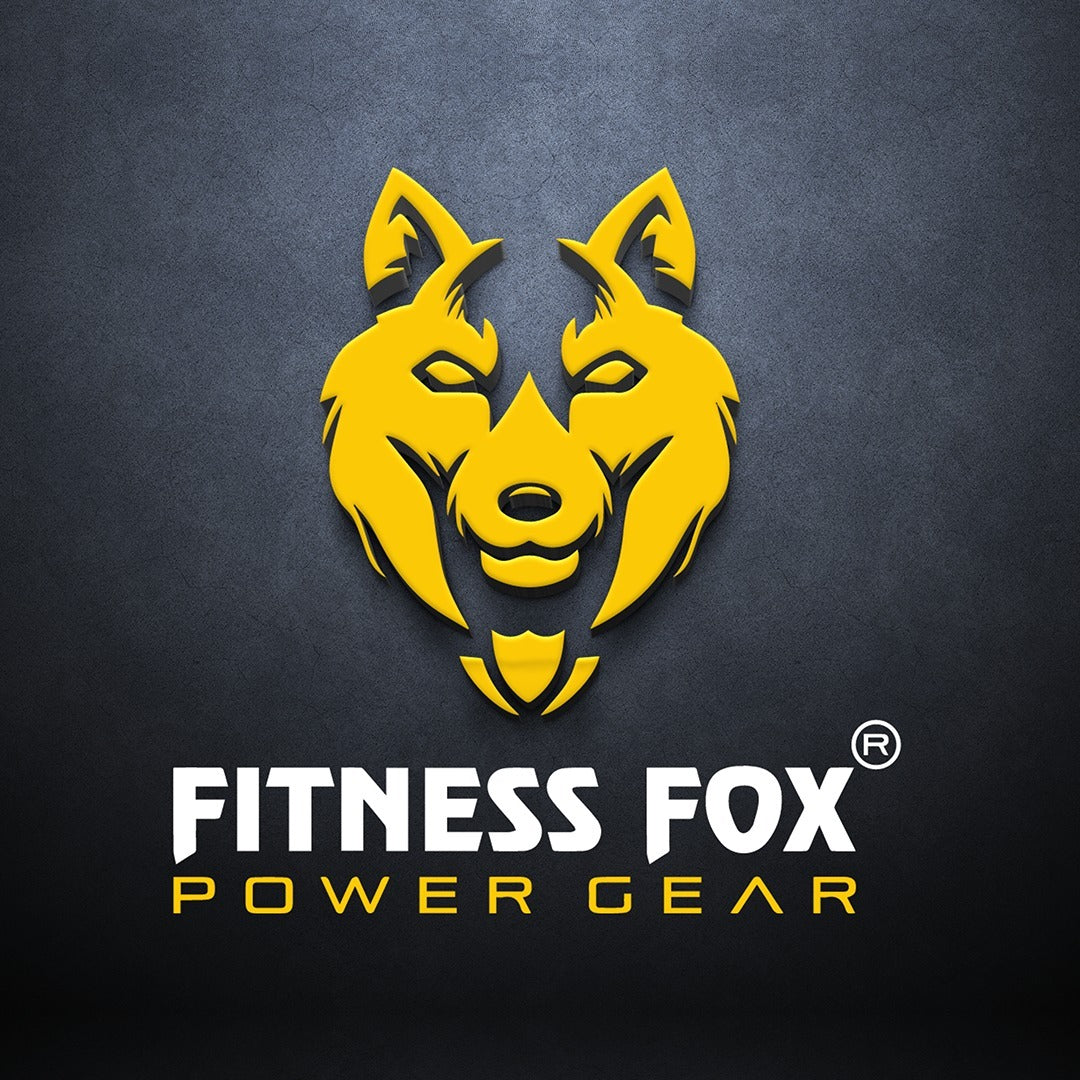Gym gloves give you confident grip, callus control, hygiene protection on shared equipment, and—if you choose the right model—built-in wrist support for pressing days. The key is matching your goal to the glove design (ventilated, leather-palm, or wrist-wrap). Below you’ll find a simple decision table, a sizing checklist, and smart care tips—plus quick links to Fitness Fox Gym Gloves so you can pick your pair and lift with less friction (literally).

Why lifters actually wear gloves (the real wins)
-
Grip you can trust when hands sweat. Textured palms and anti-slip surfaces keep dumbbells, bars, and cable handles secure—especially in humid gyms or long volume blocks. (According to buyer guides that highlight “enhanced grip” as the #1 benefit.)
-
Callus & blister control. A smooth palm interface prevents torn skin so you don’t lose training days to ripped calluses. (Common “why gloves” benefit across multiple brand blogs.)
-
Hygiene buffer on shared equipment. Gloves act as a barrier between your skin and high-touch handles; they also protect hands if you forget to take off rings (though the safest choice is to remove jewelry before lifting).
-
Comfort in long sessions. Cushioning spreads pressure on knurling, helping you stay in good positions during higher-rep sets or tempo work.
-
Optional wrist support. Some gloves integrate wraps, giving a snug, adjustable feel for bench, overhead press, and machine work.
Fitness Fox tip: Gloves won’t lift for you—but they remove small pain points so you can focus on technique, tempo, and effort.
Read more: Unveiling the Benefits of Using Gym Hand Gloves in Your Workouts
Decide fast: which hand gear fits your goal?
|
Your goal / situation |
Best choice |
Why this works well |
|
General strength training; sweaty palms |
Ventilated half-finger gym gloves |
Breathable backs + textured palms = reliable grip without bulk; perfect daily driver. |
|
Callus-prone; comfort on pulls/presses |
Leather/suede palm gloves |
Durable, smooth contact against knurling to reduce hot spots & skin tears. |
|
Want extra confidence on pressing days |
Gloves with integrated wrist wraps |
Palm grip + light stabilization in one piece of kit; convenient for machines and bench. |
|
Max-effort pulling (deadlifts/rows) |
Lifting straps (optionally with minimalist gloves) |
Straps help when grip is the limiter; rotate in raw-grip sets to keep grip strength honest. |
|
Chalk-restricted gym |
Gloves |
Cleaner than chalk and often allowed anywhere. |
Love raw bar feel? Choose a minimal-palm glove—thin, textured contact that adds traction without dulling knurl feedback.
“But don’t gloves ruin my grip?” (and other objections)
-
“I lose bar feel.” Modern gloves use thin, textured palms (leather or synthetic) that preserve tactile feedback while adding traction. Try a minimal-palm style if feedback is your priority.
-
“They get sweaty.” Ventilated backs and mesh panels fix the “sweaty glove” problem; so does regular wash/air-dry (see care tips below).
-
“I should just harden my hands.” You can build tougher skin and prevent tears during high-volume mesocycles. Consistency beats bravado.
Positive framing: Gloves are a tool—use them when they help the most (volume, humid days, shared equipment) and go bare or use straps when the session calls for it.
Read more: How Do You Wear Gloves to the Gym
How to choose the right size & fit (2-minute checklist)
-
Measure hand circumference around your knuckles (excluding thumb).
-
Try the bar test: grip a barbell—palms should sit flat with no bunching, fingers flex freely, and the closure doesn’t dig into your wrist crease.
-
Materials:
-
Leather/suede = durable and smooth against knurling.
-
Neoprene/mesh = breathable, flexible, and quick-drying.
-
Closure: secure hook-and-loop that won’t snag sleeves; look for a tidy pull tab.
-
Washability: prefer machine-washable or easy hand-wash designs so hygiene stays effortless.

Gloves vs straps vs chalk (clear roles)
-
Gloves → all-rounders for grip, comfort, hygiene, and optional wrist support.
-
Straps → specialized help when forearm fatigue limits pulling sets; great for RDLs, rows, and shrugs—but don’t rely on them for every set if you want grip strength to progress. (According to up-to-date buyer articles on straps vs gloves.)
-
Chalk → maximum dryness and tactile feel, but messy and often restricted indoors. Gloves are the cleaner, gym-friendly alternative.
Care & hygiene (make them last)
-
Air-dry after every session. Open the cuffs; let airflow do its thing.
-
Wash weekly. Cold cycle in a mesh bag or hand-wash with mild detergent; no bleach.
-
Skip the dryer. Heat can harden leather and weaken adhesives—air-dry only.
-
Deodorize on the go. A quick sport-spray or a baking-soda sachet in your gym bag keeps things fresh.

Fitness Fox picks (made to match your goals)
-
Fitness Fox Gym Gloves — Collection
Explore ventilated, leather-palm, and wrist-wrap options—all designed for confident grip and easy care. -
Heavy Duty Leather Workout Gloves
Durable leather palm with padded comfort and anti-slip coating; adjustable closure for a dialed-in fit. Great for callus control and all-round training. -
Heavy Duty Gym Hand Gloves (Wrist Support)
Built-in wrist strap for pressing days; grippy palm for secure holds when hands sweat. -
Leather Workout Gloves — Black Edition
Sleek look, ergonomic cut, and strong wrist closure—your dependable daily pair.
Quick starter routine (so gloves actually help performance)
-
Set up the bar with grip width you can repeat week to week.
-
Glove on, grip check: palms flat, closure snug, no bunching.
-
Two calm breaths before each heavy set; exhale slowly to settle the brace.
-
Lift with intent: even pressure through the palm; keep wrist neutral (or lightly wrapped if you chose wrist-wrap gloves).
-
Post-set wipe/air: open cuffs, fan once, and hang off the bag loop.
The goal is steady technique + tempo—gloves just remove distractions.
Are gym gloves good for weight lifting?
-
Yes—especially if sweaty palms or calluses disrupt training. Gloves add grip, comfort, and hygiene, and modern designs preserve bar feel. (According to current buyer guides that highlight grip/callus/hygiene benefits.) Dynamo FitnessVitacost
Do gloves weaken grip over time?
-
Not if you program smartly. Use gloves for volume/hygiene and sprinkle in strap-free sets to train raw grip on pulls. Straps are useful tools for specific heavy work—just rotate them. (According to straps vs gloves comparisons.)
Gloves or straps for deadlifts?
-
For high-rep or accessory pulls, gloves feel great. For max-effort singles where grip gives out first, straps can help you overload safely—then return to raw grip on the next block.
Can I wear rings under gloves?
-
We recommend removing rings before training. Lifestyle coverage and coaching quotes warn about ring rash and rare avulsion injuries; gloves are a better barrier than bare hands but the safest play is to leave jewelry at home.
How do I clean gym gloves?
-
Cold wash or hand-wash, air-dry only, and keep cuffs open after sessions. This keeps materials fresh and extends life.
People wear gym gloves because they make training feel better and safer: steadier grip, fewer skin issues, cleaner contact with shared equipment, and—when you want it—built-in wrist support. Pick a design that matches your goal, size it right, and keep them fresh with simple care. You’ll spend less time thinking about your hands and more time moving well and getting stronger.
Shop your fit:
-
Collection: Fitness Fox Gym Gloves















Leave a comment